Related Research Articles

Holcomb is a city in Finney County, Kansas, United States. As of the 2020 census, the population of the city was 2,245. It is located south of Highway 50.

Truman Garcia Capote was an American novelist, screenwriter, playwright, and actor. Several of his short stories, novels, and plays have been praised as literary classics, including the novella Breakfast at Tiffany's (1958) and the true crime novel In Cold Blood (1966). His works have been adapted into more than 20 films and television productions.

In Cold Blood is a non-fiction novel by the American author Truman Capote, first published in 1966. It details the 1959 murders of four members of the Clutter family in the small farming community of Holcomb, Kansas.
A home invasion, also called a hot prowl burglary, is a sub-type of burglary in which an offender unlawfully enters into a building residence while the occupants are inside. The overarching intent of a hot prowl burglary can be theft, robbery, assault, sexual assault, murder, kidnapping, or another crime, either by stealth or direct force. Hot prowl burglaries are considered especially dangerous by law enforcement because of the potential for a violent confrontation between the occupant and the offender.
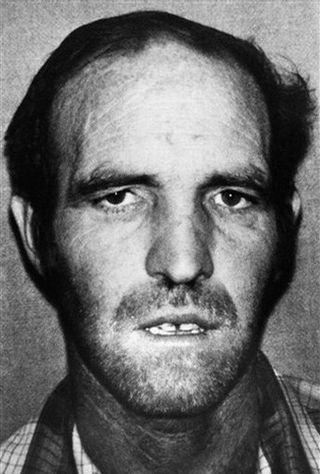
Ottis Elwood Toole was an American serial killer who was convicted of six counts of murder. Like his companion Henry Lee Lucas, Toole made confessions which resulted in murder convictions, and which he later recanted. The discrediting of the case against Lucas for crimes for which Toole had offered corroborating statements created doubts as to whether either was a genuine serial killer or, as Hugh Aynesworth suggested, both were merely compliant interviewees whom police used to clear unsolved murders from the books.

Infamous is a 2006 American drama film written and directed by Douglas McGrath. It is based on George Plimpton's 1997 book, Truman Capote: In Which Various Friends, Enemies, Acquaintances, and Detractors Recall His Turbulent Career and covers the period from the late 1950s through the mid-1960s, during which Truman Capote researched and wrote his bestseller In Cold Blood (1965).

Capote is a 2005 American biographical drama film about American novelist Truman Capote directed by Bennett Miller, and starring Philip Seymour Hoffman in the title role. The film primarily follows the events during the writing of Capote's 1965 nonfiction book In Cold Blood. The film was based on Gerald Clarke's 1988 biography Capote. It was released on September 30, 2005, coinciding with what would've been Capote's 81st birthday.
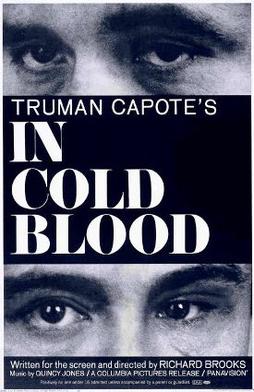
In Cold Blood is a 1967 American neo-noir crime film written, produced and directed by Richard Brooks, based on Truman Capote's 1966 nonfiction novel of the same name. It stars Robert Blake as Perry Smith and Scott Wilson as Richard "Dick" Hickock, two men who murder a family of four in Holcomb, Kansas. Although the film is in parts faithful to the book, Brooks made some slight alterations, including the inclusion of a fictional character, "The Reporter". The film was shot on location at sites where Smith and Hickock's crimes occurred, including the real Clutter home where they robbed and murdered all four members of the family. The film was nominated for four Academy Awards: Best Director, Best Original Score, Best Cinematography, and Best Adapted Screenplay. In 2008, In Cold Blood was selected for preservation in the United States National Film Registry by the Library of Congress as being "culturally, historically, or aesthetically significant".
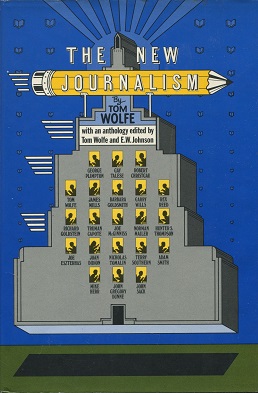
The New Journalism is a 1973 anthology of journalism edited by Tom Wolfe and E. W. Johnson. The book is both a manifesto for a new type of journalism by Wolfe, and a collection of examples of New Journalism by American writers, covering a variety of subjects from the frivolous to the deadly serious. The pieces are notable because they do not conform to the standard dispassionate and even-handed model of journalism. Rather they incorporate literary devices usually only found in fictional works.

Perry Edward Smith was one of two career criminals convicted of murdering the four members of the Clutter family in Holcomb, Kansas, United States, on November 15, 1959, a crime that was made famous by Truman Capote in his 1966 non-fiction novel In Cold Blood. Along with Richard Hickock, Smith took part in the burglary and quadruple murder at the Clutter family farmhouse.
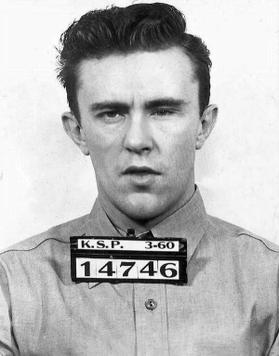
Richard Eugene Hickock was one of two ex-convicts convicted of murdering four members of the Clutter family in Holcomb, Kansas on November 15, 1959, a crime made famous by Truman Capote in his 1966 non-fiction novel In Cold Blood. Along with Perry Edward Smith, Hickock took part in the burglary and multiple murder at the Clutter family farmhouse.

Lowell Lee Andrews was a University of Kansas sophomore convicted of the murders of his parents and his sister on November 28, 1958, a crime for which he was later executed.
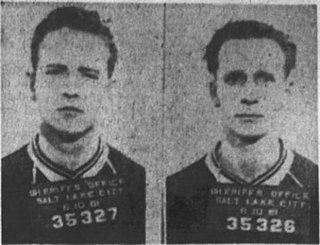
George Ronald York and James Douglas Latham were an American spree killer duo who are the most recent people to be legally executed by the U.S. state of Kansas.
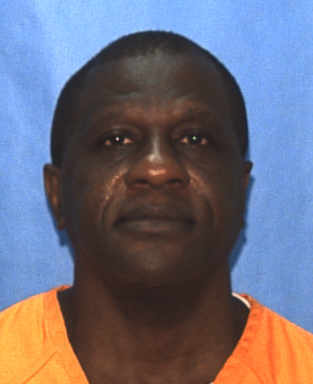
Lucious Boyd is an American convicted murderer, rapist, and suspected serial killer who is currently on death row in Florida. Boyd was sentenced to death for the 1998 rape and murder of 21-year-old Dawnia Dacosta and is a suspect in at least ten other homicides and disappearances. He was acquitted of the 1993 murder of a man whom he claimed he stabbed in self-defense. He was profiled on Forensic Files.

In Cold Blood is an American true crime drama television miniseries directed by Jonathan Kaplan and written by Benedict Fitzgerald. It is based on the 1966 novel of the same name by Truman Capote, which reconstructs the 1959 murders of the Clutter family in Holcomb, Kansas. The miniseries stars Anthony Edwards, Eric Roberts, and Sam Neill, with Leo Rossi, Louise Latham, Gwen Verdon, Bethel Leslie, L. Q. Jones, Gillian Barber, and Kevin Tighe in supporting roles.
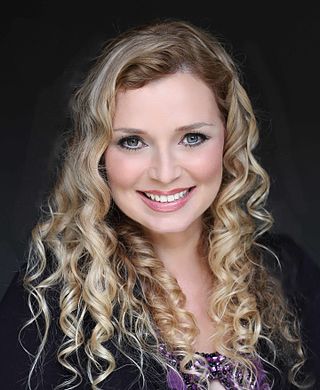
CeCe Moore is an American genetic genealogist who has been described as the country's foremost such entrepreneur. She has appeared on many TV shows and worked as a genetic genealogy researcher for others such as Finding Your Roots. She has reportedly helped law enforcement agencies in identifying suspects in over 300 cold cases using DNA and genetic genealogy. In May 2020, she began appearing in a prime time ABC television series called The Genetic Detective in which each episode recounts a cold case she helped solve. In addition to her television work, she is known for pioneering the genetic genealogy methodologies used by adoptees and others of unknown origin for identifying biological family.
Alvin Adams Dewey was an American special agent of the Kansas Bureau of Investigation.

In the early morning hours of November 15, 1959, four members of the Clutter family – Herb Clutter, his wife, Bonnie, and their teenage children Nancy and Kenyon – were murdered in their rural home just outside the small farming community of Holcomb, Kansas. Two ex-convicts, Perry Smith and Richard Hickock, were found guilty of the murders and sentenced to death. They were both executed on April 14, 1965. The murders were detailed by Truman Capote in his 1966 non-fiction novel In Cold Blood.

Joseph Magaletti Jr. was an American murderer and suspected serial killer who was convicted of killing his neighbor in Sarasota, Florida, in 1995, for which he was sentenced to life imprisonment. After his death in 2015, he was linked to a similar murder dating back to 1985 via touch DNA analysis, and authorities are now investigating his possible involvement in other murders.
References
- ↑ Doig, Matthew (December 18, 2005). "The Walker Murders Unsolved". Sarasota Herald Tribune. Archived from the original on December 18, 2013. Retrieved December 11, 2012.
- ↑ Hunter, JT (September 1, 2016). In Colder Blood. RJ Parker Publishing.
- ↑ Bruner, Betsey (November 9, 2009). "Memories forged 'in cold blood'". Arizona Daily Sun. Retrieved September 30, 2010.
- ↑ "An Enduring Mystery". Sarasota Herald Tribune. December 18, 2005. Archived from the original on October 6, 2010. Retrieved September 30, 2010.
- 1 2 3 4 Tamara Lush and John Hanna (December 5, 2012). "Did 'In Cold Blood' murderers kill Florida family, too?". Mercury News. Retrieved December 11, 2012.
- 1 2 3 McFarland, Shannon (December 2, 2012). "Did 'In Cold Blood' killers murder Sarasota's Walker family in '59? (Wayback archive copy)". Herald Tribune. Archived from the original on December 7, 2012. Retrieved December 13, 2012.
- ↑ "Walker Slaying Confession Discredited by Sheriff". Sarasota Herald Tribune. December 3, 1962. Archived from the original on September 24, 2015. Retrieved December 11, 2012.
- ↑ Doig, Matthew (April 6, 2008). "The murderous journey from lies to prison and redemption". Herald Tribune. Archived from the original on August 23, 2015. Retrieved December 12, 2012.
- ↑ Jordan, Tracy (March 18, 2011). "Cold case: Stroudsburg bartender may hold key to unsolved Florida murders". The Morning Call. Archived from the original on October 18, 2014. Retrieved December 11, 2012.
- ↑ McFarland, Shannon (December 9, 2012). "Walker investigation shows parts of 'In Cold Blood' don't add up (Wayback archive copy)". Herald Tribune. Archived from the original on December 13, 2012. Retrieved December 13, 2012.
- ↑ Newcomb, Alyssa (December 3, 2012). "DNA From 'In Cold Blood' Killers Could Solve 1959 Florida Cold Case". ABC News. Retrieved December 11, 2012.
- ↑ Germano, Sarah (February 8, 2013). "Did the Clutter Murderers Kill Again?". Wall Street Journal. Retrieved February 13, 2013.
- ↑ Koehn, Donna (August 13, 2013). "No DNA link between Walker murders, 'In Cold Blood' killers". Sarasota Herald Tribune. Archived from the original on July 27, 2016. Retrieved June 30, 2023.
- ↑ Masterman, Becky (June 13, 2019). "'In Cold Blood' and the Murders Truman Capote Missed" . Retrieved October 16, 2022.